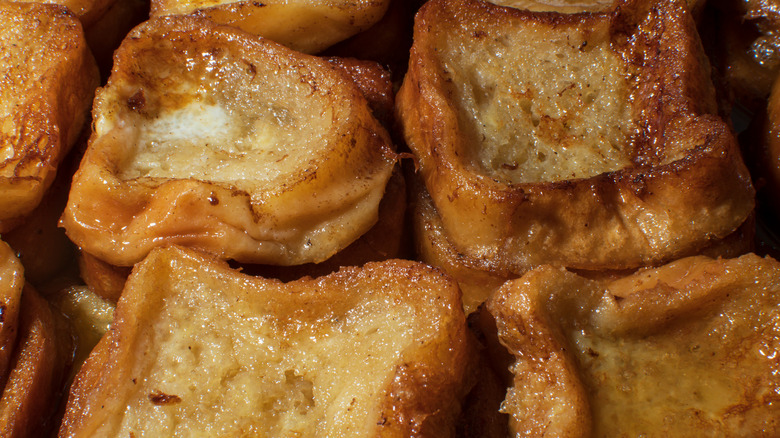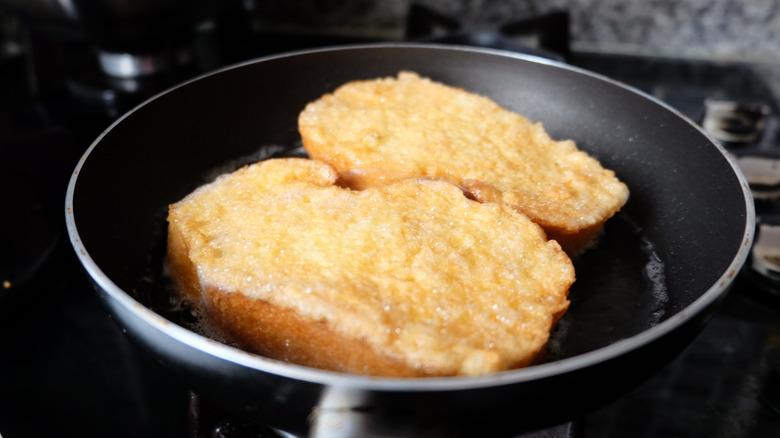What Makes Spanish Torrijas Different From French Toast?
While similar in many ways, Spanish torrijas and French toast do have their differences. Both are relatively cheap, easy to make, and on the sweeter side. While the exact origins of French toast are hard to pin down, similar recipes date back to the Roman empire. Regardless of its precise origins, in France, French toast, or pain perdu, was considered a way to bring stale bread back to life when food was scarce. To revive it, the bread was placed in a mixture, most commonly milk and eggs, and then fried in butter (via Food and Wine).
Spanish torrijas, on the other hand, are a sweet treat found during Easter across Spain (via The Culture Trip). Although there are various preparations, the general idea of dunking bread into a mixture and then pan-frying it remains the same. It sounds pretty similar to French toast, right? Especially once we consider that this "mixture" is usually an egg wash, just like traditional French toast. So, where does the difference lie?
It's all about the frying
First of all, you will commonly see Spanish torrijas made with baguettes rather than square bread loaves. While recipes for torrijas always include an egg wash but depending on where you are in Spain, what gets added to it can vary. Many recipes will include alcohol; in Seville, for example, wine is used instead of milk to make torrijas, according to Bautrip. It is challenging to qualify some differences as distinctions as French toast is also prepared in countless ways, but a popular method for preparing torrijas is by coating them in cinnamon sugar and frying them until they develop a crispy caramelized exterior (via Serious Eats).
But the biggest distinction, according to The Culture Trip, between Spanish torrijas from French toast is that they are typically fried in olive oil instead of butter. Spain is the number one producer of olive oil in the world, so it seems only fitting to fry up their version of sweetened, custard-like stale bread in it. In fact, each Spanish person is said to consume more than 2.5 gallons of olive oil a year. Because olive oil plays such an important role in Spanish kitchens, this difference only makes sense (via Spanish Sabores). Now break out your best olive oil, and try them out for yourself!

